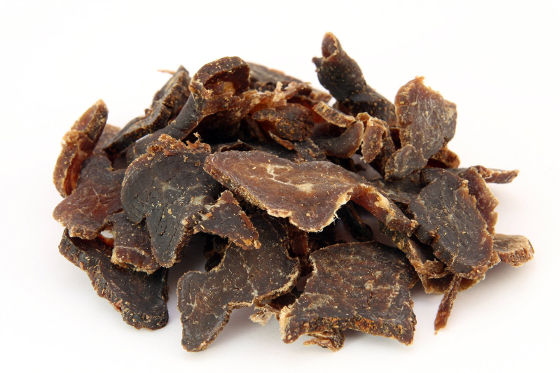Jerky has been a popular food for thousands of years, and we've come a long way in how we make one of our favorite snacks. Today there are dozens of jerky recipes available, from different cooking methods to hundreds of different herbs and spice blends to use. Here’s how you can do it all at home, from start to finish.

Procure Your Meats
Whether you’re a family of avid hunters or a brood of grocery-store shoppers, the first step to making homemade jerky is procuring your meat. The possibilities are limitless. Choose any type of meat that you want to work with as long as it is lean and in excellent condition. If you’re using ground meat, use 93 percent lean for good measure. For whole muscle jerky, be sure to trim the excess fat off of your meat and slice it up in pieces that are no bigger than one-fourth of an inch.
Marinate
If you’re marinating your meat, which you probably are, be sure to do it in the refrigerator. For whole muscle jerky, marinate it in an acidic liquid mixture containing your preferred spices and seasonings; and if you’re working with ground meat, use dried spices and cure the meat before slicing it up into jerky-like strips.
For a sweet and salty jerky with a spicy kick, try this marinade:
- 2/3 cup Worcestershire sauce
- 2/3 cup soy sauce
- 1 tablespoon honey
- 2 teaspoons black pepper
- 2 teaspoons onion powder
- 1 teaspoon liquid smoke and
- 1 teaspoon red pepper flakes
Dehydration 101
Now that your meat is marinated, it's time to dehydrate it. Many consider dehydrators to be the best way to make jerky today, but an oven will also work. If you decide to use a dehydrator, first determine its true temp while it’s empty. Be sure not to rely on its built-in temperature settings but your own dial system thermometer instead; this way you can make sure that you’re drying your jerky safely for consumption. If you're in the market to buy a dehydrator, many retailers offer a variety (and sometimes on sale!) that can be used to make jerky safely.
Drying Temperature
Your meat of choice should be dried at a temperature of 145 to 155-degrees Fahrenheit for a minimum of four hours, but six hours is preferable. After the drying period, move the jerky to the preheated oven of 275-degrees Fahrenheit and cook for 10 minutes on a baking sheet. Place them close together, but make sure that they are not overlapping so that they can cook evenly.
Packaging
When your jerky comes out of the oven it will be sizzling hot, so give the jerky strips time to cool off before packaging. This final step is important because moisture and air contribute to bacteria growth, making your jerky inedible. Using a vacuum sealer is the best way to package and store your jerky snacks for long term periods. This method keeps the air out and keeps your jerky soft without spoiling.
Freezing
For even longer term storage, consider freezing the jerky. Again, vacuum-sealed bags are recommended, as it is estimated that they can keep jerky for more than 12 months.
